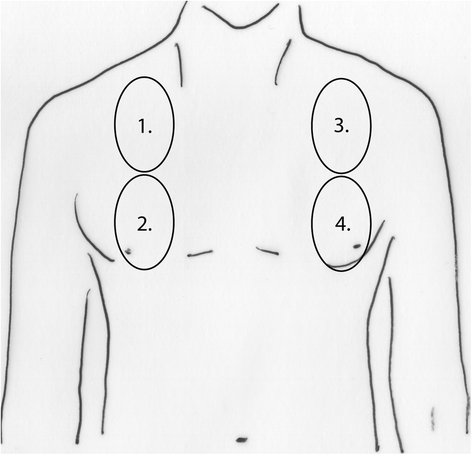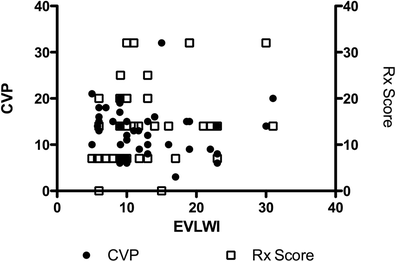Simplified lung ultrasound protocol shows excellent prediction of extravascular lung water in ventilated intensive care patients
- PMID: 25656060
- PMCID: PMC4335373
- DOI: 10.1186/s13054-015-0756-5
Simplified lung ultrasound protocol shows excellent prediction of extravascular lung water in ventilated intensive care patients
Abstract
Introduction: Ultrasound of the lung and quantification of B lines was recently introduced as a novel tool to detect overhydration. In the present study, we aimed to evaluate a four-region protocol of lung ultrasound to determine the pulmonary fluid status in ventilated patients in the intensive care unit.
Methods: Fifty patients underwent both lung ultrasound and transpulmonary thermodilution measurement with the PiCCO system. An ultrasound score based on number of single and confluent B lines per intercostal space was used to quantify pulmonary overhydration. To check for reproducibility, two different intensivists who were blinded as to the ultrasound pictures reassessed and classified them using the same scoring system. The results were compared with those obtained using other methods of evaluating hydration status, including extravascular lung water index (EVLWI) and intrathoracic blood volume index calculated with data from transpulmonary thermodilution measurements. Moreover, chest radiographs were assessed regarding signs of pulmonary overhydration and categorized based on a numeric rating scale.
Results: Lung water assessment by ultrasound using a simplified protocol showed excellent correlation with EVLWI over a broad range of lung hydration grades and ventilator settings. Correlation of chest radiography and EVLWI was less accurate. No correlation whatsoever was found with central venous pressure measurement.
Conclusion: Lung ultrasound is a useful, non-invasive tool in predicting hydration status in mechanically ventilated patients. The four-region protocol that we used is time-saving, correlates well with transpulmonary thermodilution measurements and performs markedly better than chest radiography.
Figures





References
-
- Liteplo AS, Marill KA, Villen T, Miller RM, Murray AF, Croft PE, et al. Emergency thoracic ultrasound in the differentiation of the etiology of shortness of breath (ETUDES): sonographic B-lines and N-terminal pro-brain-type natriuretic peptide in diagnosing congestive heart failure. Acad Emerg Med. 2009;16:201–10. doi: 10.1111/j.1553-2712.2008.00347.x. - DOI - PubMed
Publication types
MeSH terms
LinkOut - more resources
Full Text Sources
Other Literature Sources
Medical

